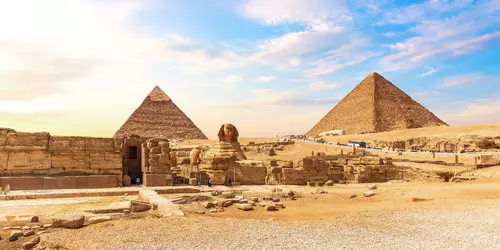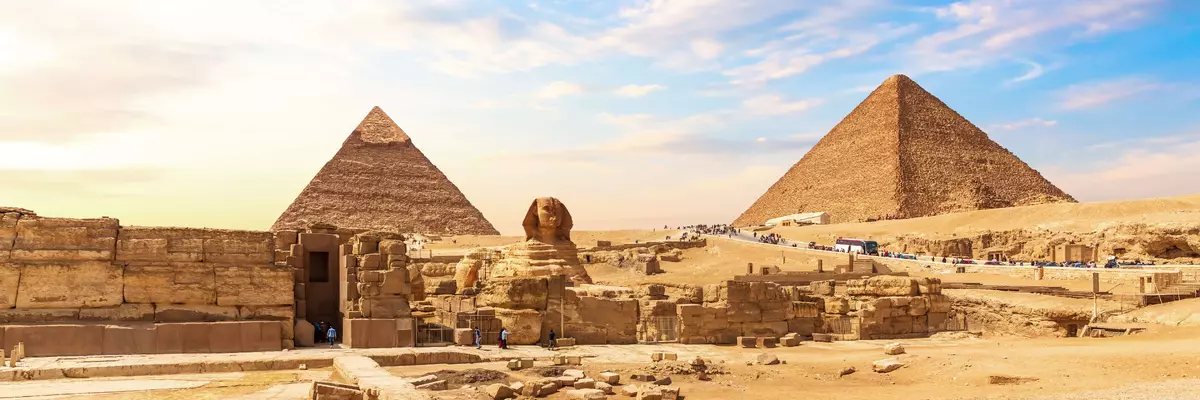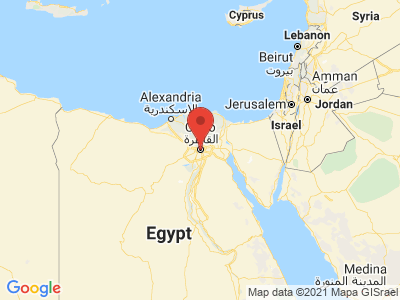Climate Table Giza
Jan | Feb | Mar | Apr | May | Jun | Jul | Aug | Sep | Oct | Nov | Dec | |
|---|---|---|---|---|---|---|---|---|---|---|---|---|
| Max. Temperature | 19° | 21° | 24° | 28° | 33° | 36° | 35° | 35° | 31° | 30° | 26° | 22° |
| Min. Temperature | 9° | 9° | 11° | 15° | 18° | 20° | 22° | 22° | 20° | 18° | 15° | 10° |
| Sun Hours | 8 | 9 | 9 | 11 | 11 | 13 | 13 | 11 | 12 | 10 | 9 | 8 |
| Rain Days | 3 | 2 | 2 | 1 | 1 | 0 | 0 | 0 | 0 | 1 | 1 | 3 |
The climate year of Giza
The landmarks of Egypt are located about 20 km from the center of Cairo, on the west bank of the Nile, in the port city of Giza. The transition from Cairo to Giza is smooth and the two cities form a metropolitan region with over 16 million inhabitants. On the other side of the Nile stretch desert areas and in the northern direction the Nile passes into the Nile Delta, with many water arms. Giza has very warm and dry summer months, with June having the highest daytime temperatures, but dropping by at least 12-15°C at night. In the summer months from June to September it does not rain at all and in spring and autumn it rains only 1 or 2 days a month. Winter is mild and it rains about 3 days a month - the coldest month is January.
General information about Giza
From afar, the three great pyramids of Giza can be seen in the boulder desert around Cairo. The largest and oldest of the pyramids in Giza is the Pyramid of Khufu with a base area of 230 x 230 m and a height of 137 m after removal of the outer layer. Originally, the north-facing pyramid was 146.6 m high and was built about 2580 years before Christ. The chamber system still poses many mysteries, just like the Great Sphinx of Giza with 20 m height and 73.5 m length. It is the largest Sphinx statue in the world and was probably built at the same time as the pyramids. For most tourists, this is the highlight of their Nile trip. The Egyptian Museum in Cairo houses priceless finds of Egyptian culture, including Tutankhamen's collection of gold and jewelry. Also of interest in Cairo are the ancient Coptic Cairo, the Hanging Church and the Ben Ezra Synagogue. Just as worth seeing are the Citadel of Salah el-Din and the Mohamed Ali Alabaster Mosque, one of the landmarks of Cairo. Near Memphis, in the desert, lies the necropolis of Sakkara with the step pyramid of King Zoser.
Tourism Giza
January in Giza has the lowest temperatures, about 9 hours of sun and about 3 rainy days. December, February and March are a little higher in temperatures and sunshine hours are 8 in December and 9 hours a day in February and March. April and May bring about 1 rainy day per month and 11 hours of sunshine - temperatures increase. In June, July and August the sun shines 12 - 13 hours, in September, October and November 11 to 9 hours falling. These months already have high temperatures, but June, July and August the highest.
For those who don't mind half a day or a whole day of rain, December to March are certainly the right months to make a trip to Giza to see the pyramids and Sphinx. On the other hand, for those who like hot temperatures up to 35°C, the months of May to October are recommended.


